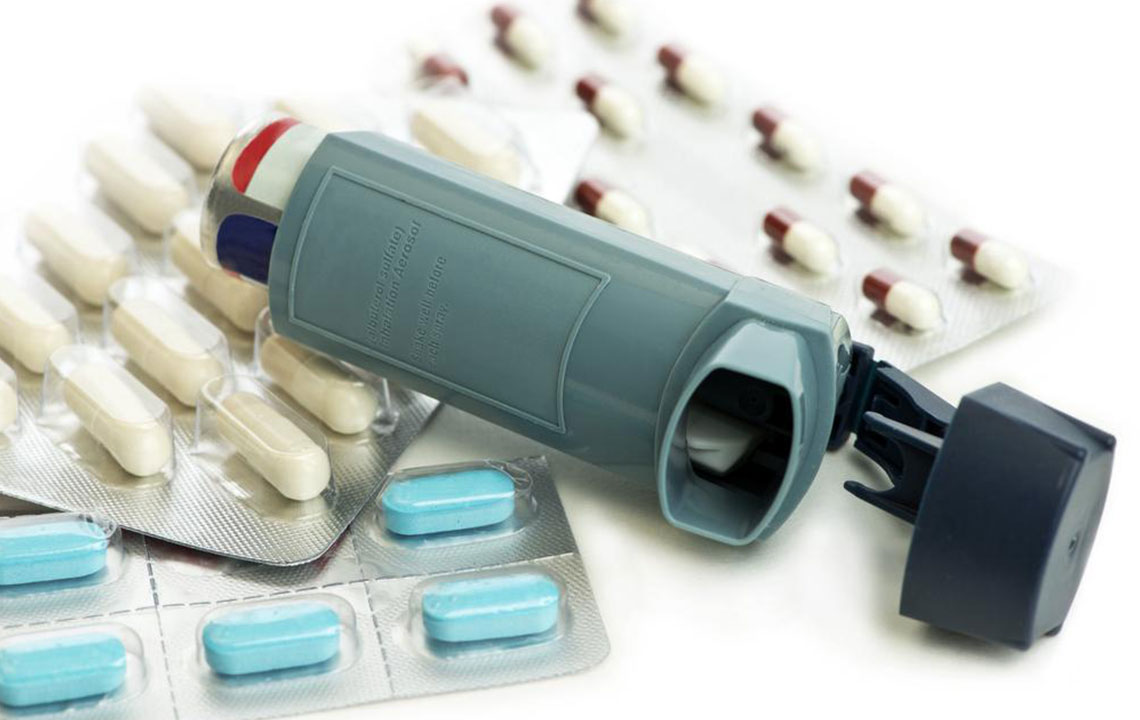Ultimate Guide to Modern Asthma Treatment and Management Strategies
Explore comprehensive asthma treatment options including inhalers, medications, biologics, and personalized management strategies. Learn how tailored therapies improve lung function, reduce flare-ups, and enhance quality of life. This detailed guide covers all aspects of modern asthma care, emphasizing the importance of professional consultation for effective control and symptom management.

Comprehensive Overview of Asthma Medications and Personalized Management Approaches
Asthma management has advanced significantly over the years, providing patients with a diverse array of treatment options tailored to their specific needs. Modern therapies encompass oral medications, inhalers, liquids, and injectable drugs, each designed with user convenience and efficacy in mind. These medications are formulated in various forms, including powders, sprays, and liquids, allowing targeted delivery directly into the lungs. The core goal of asthma treatment is to control symptoms, prevent exacerbations, and improve quality of life. Achieving optimal outcomes requires personalized treatment plans developed in close consultation with healthcare professionals, considering factors such as age, severity, triggers, and overall health.
Understanding the different types of asthma medications is crucial for effective management. These medications work through distinct mechanisms—some relieve airway constriction, while others reduce inflammation or address underlying immune responses. An integrated approach that combines multiple medication types often provides the best control, especially in moderate to severe cases. Below, we delve into each category of asthma medications, their roles, administration methods, and considerations for use, providing a comprehensive resource for patients and caregivers alike.
Bronchodilators: Rapid Relief and Long-Term Control
Bronchodilators form the cornerstone of immediate symptom relief in asthma treatment. These drugs relax the smooth muscles around the airways, opening constricted passages to facilitate easier airflow. There are two main types: short-acting bronchodilators (SABAs) and long-acting bronchodilators (LABAs). SABAs, such as albuterol, are used during asthma attacks for quick relief and are essential emergency medications. They provide rapid symptom alleviation within minutes and typically last 4 to 6 hours. In contrast, LABAs like salmeterol and formoterol are used regularly as part of maintenance therapy for prolonged control of persistent symptoms. When combined with anti-inflammatory medications, they significantly improve overall asthma management.
Proper usage of bronchodilators, especially inhalers, involves correct inhalation techniques. Many patients find spacer devices helpful in ensuring medication reaches the lungs effectively. While bronchodilators are vital for symptom relief, they do not address underlying inflammation and should be used alongside other therapies for comprehensive control.
Anti-inflammatory Agents: Targeting the Root Cause
Inflammation of the airways is a primary characteristic of asthma. Anti-inflammatory medications work to reduce swelling, mucus production, and airway hypersensitivity. Corticosteroids, delivered mainly via inhalers, are the most common anti-inflammatory agents. Inhaled corticosteroids (ICS) such as fluticasone, budesonide, and beclomethasone are highly effective in controlling chronic symptoms, preventing exacerbations, and improving lung function. They are used daily in moderate to severe asthma and often form the base of maintenance therapy. For severe exacerbations, oral corticosteroids like prednisone may be prescribed temporarily. Patients are advised to rinse their mouth after inhalation to prevent oral thrush or other infections, which can occur with steroid use.
In addition to corticosteroids, leukotriene receptor antagonists like montelukast and zafirlukast can be used for mild persistent asthma or as adjunct therapy. They work by blocking inflammatory mediators involved in airway narrowing and mucus secretion, providing additional control and reducing the need for inhaled corticosteroids in some cases.
Anticholinergic Medications: Extended Control
Anticholinergic drugs, such as ipratropium bromide and tiotropium, are used primarily for long-term management, especially in patients with co-existing chronic obstructive pulmonary disease (COPD). They work by blocking the parasympathetic nerves that cause airway constriction and mucus production. Delivered via inhalers or nebulizers, these medications are particularly helpful when patients experience frequent coughing, chest tightness, or excessive mucus. Combining anticholinergics with corticosteroids can enhance overall control, particularly in patients with complex respiratory symptoms.
Anticholinergics are generally safe, but some patients may experience dry mouth, neck tightness, or urinary retention. Regular medical review is necessary to adjust dosages and assess efficacy.
Antibiotics and Antivirals: Managing Infectious Exacerbations
Asthma flare-ups often occur in tandem with respiratory infections caused by bacteria or viruses. During such episodes, antibiotics or antiviral drugs may be necessary to manage the underlying infection. It is critical to use these medications appropriately and complete the full course as prescribed to prevent antibiotic resistance and ensure complete resolution of the infection. It’s important to recognize that antibiotics are ineffective against viral infections, which are more common in asthma exacerbations. Proper diagnosis by healthcare providers can help determine whether an antibiotic or antiviral is indicated.
Methylxanthines: The Older yet Still Relevant Option
Methylxanthines, such as theophylline, are oral medications with bronchodilator and mild anti-inflammatory effects. Though less frequently used today due to potential side effects, they remain a treatment option in certain cases, especially where other therapies are insufficient. Methylxanthines require careful blood level monitoring because they can cause adverse effects like heart rhythm disturbances, seizures, headaches, nausea, and sleep issues. When prescribed, patients should be aware of potential drug interactions and side effects, making them suitable mainly for controlled, specialist-supervised therapy.
Biologic Therapies: Targeted Immune Modulation
For patients with severe asthma unresponsive to conventional therapies, biologic drugs offer a groundbreaking treatment avenue. These therapies are designed to target specific components of the immune system involved in asthma pathogenesis. Monoclonal antibodies like omalizumab, mepolizumab, and benralizumab bind to key cytokines or IgE antibodies, effectively reducing airway inflammation and the frequency of exacerbations. They are administered via injections or infusions, usually every few weeks.
Biologics can significantly improve quality of life for patients with severe eosinophilic or allergic asthma. However, their use requires careful assessment by respiratory specialists, monitoring for side effects such as increased infection risk, hypersensitivity reactions, or rare cardiovascular events.
Managing Severe Asthma: Personalized, Intensive Approaches
Severe asthma necessitates individualized treatment plans that may include high-dose inhaled medications, biologics, or specialized therapies like bronchial thermoplasty. Regular monitoring through lung function tests and symptom diaries helps tailor ongoing therapy. Healthcare providers may employ advanced diagnostics to classify asthma phenotype, guiding targeted interventions. In some cases, hospitalization or specialized clinics are involved to optimize management and prevent life-threatening exacerbations.
Inhalation Devices: Ensuring Effective Delivery
Multiple devices are available to deliver asthma medications effectively. Nebulizers convert liquid medication into fine mist, making them ideal for young children, elderly patients, or those with severe airway constriction. Sessions typically last 5 to 10 minutes and require electrical power, making them less portable. Inhalers, such as metered-dose inhalers (MDIs) and dry powder inhalers (DPIs), are more portable and convenient for daily use. Correct technique is paramount, and healthcare professionals can instruct patients on proper usage to maximize drug delivery and effectiveness.
Combination Inhalers: Streamlining Treatment
Combination inhalers contain both a long-acting beta-agonist (LABA) and a corticosteroid, simplifying medication routines and improving adherence. Common examples include Symbicort and Advair. These inhalers provide sustained bronchodilation combined with anti-inflammatory effects, reducing the severity and frequency of symptoms. While generally safe, patients should report any side effects such as sore throat, headaches, or irregular heartbeats. Rare but serious adverse effects like increased blood pressure or cardiac rhythm issues warrant close medical supervision.
In conclusion, asthma management has evolved into a nuanced, individualized practice. A combination of medications tailored to each patient's unique phenotype, severity, and triggers provides the best chance for optimal control. Regular consultations with healthcare providers, adherence to prescribed treatments, and patient education are critical to maintaining a good quality of life. Advances in biologics and inhalation technology continue to enhance outcomes, providing hope for those with severe or refractory asthma. Ultimately, proactive management and personalized care remain the pillars of effective asthma treatment, ensuring patients can breathe easier and live fuller lives.





